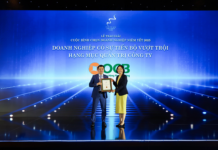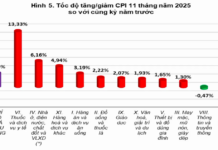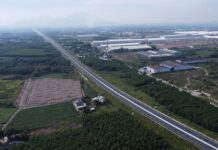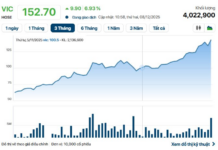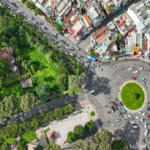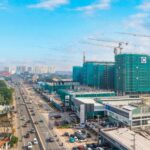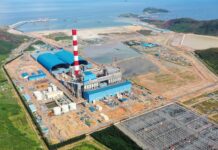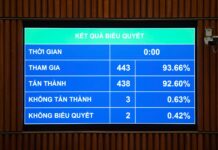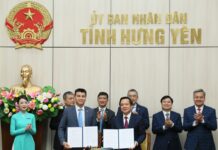The Ho Chi Minh City Department of Construction has urgently submitted a proposal to the city’s People’s Committee, seeking approval for the investment policy of a project to construct a traffic interchange connecting the Ben Luc – Long Thanh Expressway with Rung Sac Road in Binh Khanh Commune, Can Gio District. This initiative is considered a critical link in completing the strategic transportation axis in the southern part of the city, gradually alleviating the long-standing ferry congestion at Binh Khanh.
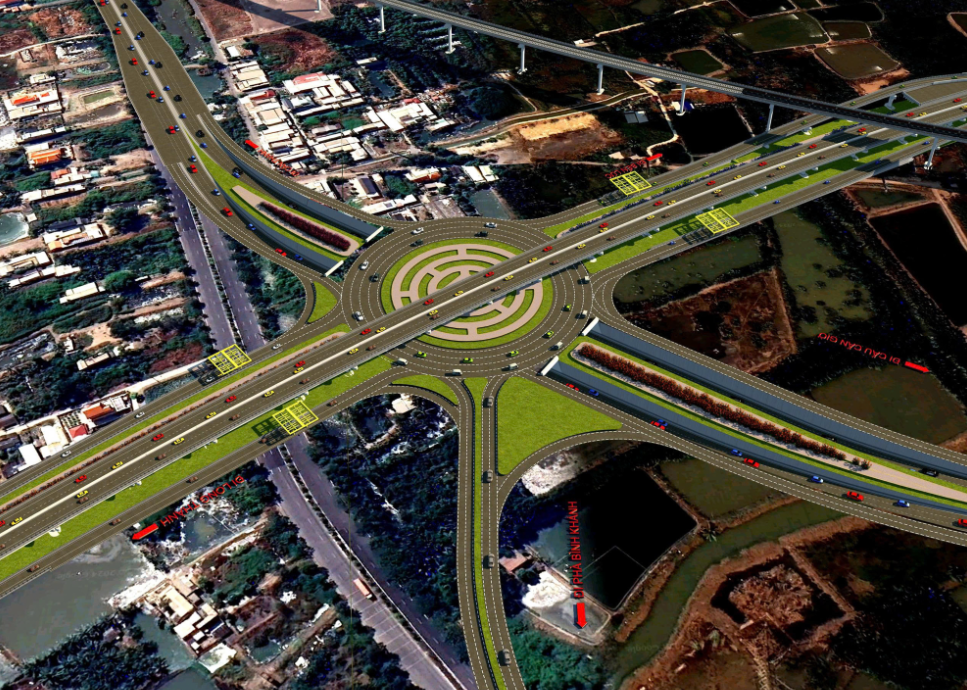
Rendering of the Rung Sac Road – Ben Luc – Long Thanh Expressway interchange. Image: Ho Chi Minh City Department of Construction
Located approximately 3km from Binh Khanh Ferry, the interchange is positioned at the junction of the Ben Luc – Long Thanh Expressway and Rung Sac Road. The investment scope includes 1.46km on the expressway and 1.2km on Rung Sac Road, extending 600m toward Can Gio Bridge (future construction), 600m toward Can Thanh, and 365m toward Binh Khanh Ferry. The total investment is estimated at nearly VND 3 trillion.
Notably, this will be Vietnam’s first multi-level interchange designed to international standards, comparable to modern structures in Singapore and South Korea.
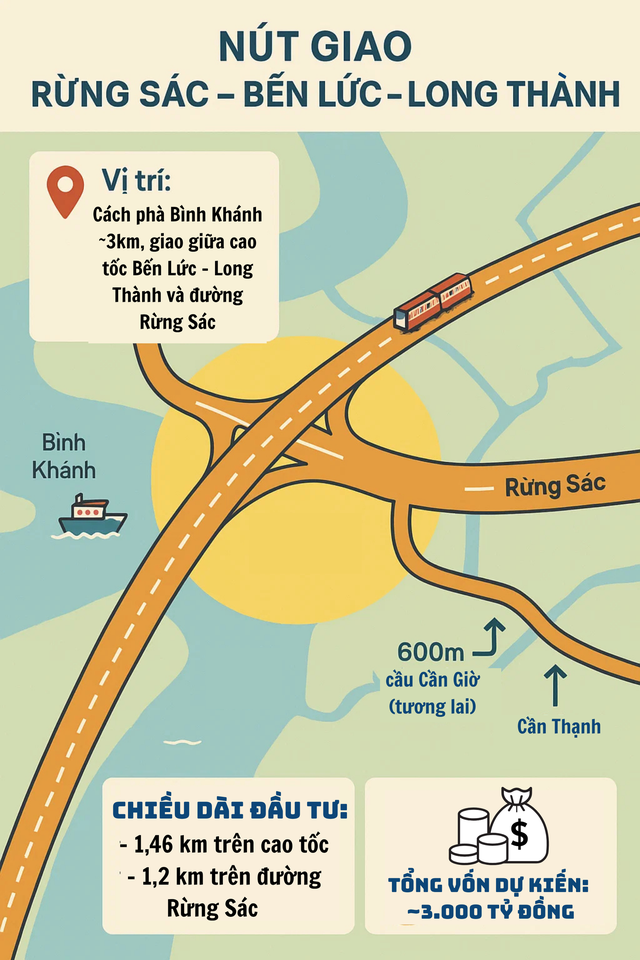
Image caption
The interchange’s centerpiece is a 50m-radius roundabout, ensuring continuous and safe traffic flow. On the Ben Luc – Long Thanh Expressway, the city plans to add a new unit to complete the 8-lane configuration with a design speed of 100 km/h.
Additionally, Rung Sac Road will be expanded with two two-way underpasses, prioritizing traffic flow between Rung Sac Road and Can Gio Bridge. Each underpass will be 610m long, with a 150m enclosed section, combined with a 230m open tunnel and retaining wall; the road surface inside the tunnel will be 10m wide.
The investment structure of nearly VND 3 trillion includes over VND 1.162 trillion for compensation and resettlement support, more than VND 1.204 trillion for construction and equipment, and the remainder for project management, consulting, and contingency costs.
According to the timeline, the investment policy is expected to be approved in Q2-Q3/2025; survey and appraisal work will commence in Q3-Q4/2025; compensation, support, and resettlement will be implemented from late 2025 to late 2026. The project is slated to break ground in Q2/2026 and be completed in Q1/2028.
Currently, travel between Binh Khanh, Ly Nhon, Tam Thon Hiep, An Thoi Dong, Long Hoa communes, and Ho Chi Minh City’s center relies almost entirely on Binh Khanh Ferry. Heavy traffic during weekends, holidays, or inclement weather often causes prolonged congestion, limiting access to healthcare, education, and administrative services. The new interchange is expected to fundamentally address these issues, enhancing emergency response and evacuation capabilities during natural disasters or emergencies.
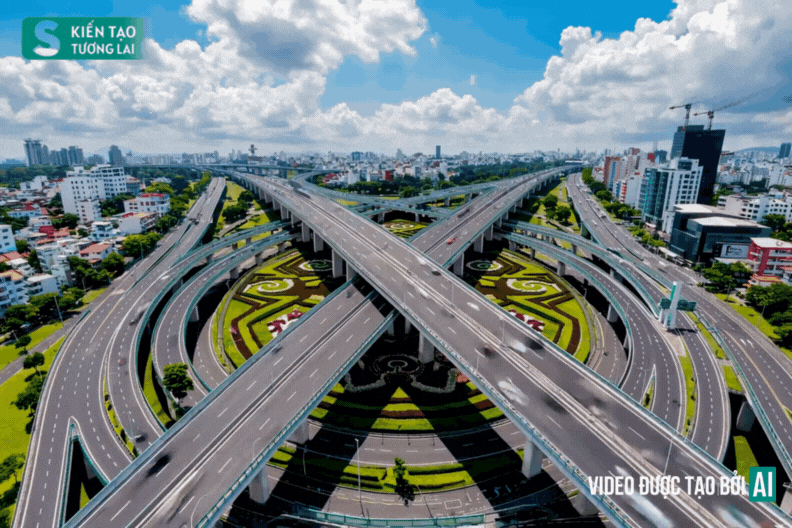
AI-generated illustration of the future Rung Sac Road – Ben Luc – Long Thanh Expressway interchange by ChatGPT
As Ho Chi Minh City accelerates regional connectivity following administrative mergers with Ba Ria – Vung Tau and Binh Duong, direct sea-facing infrastructure has become more critical than ever. Previously, travel between Ho Chi Minh City and Ba Ria – Vung Tau primarily routed through Dong Nai, resulting in longer travel times and congestion risks.
Upon completion and integration with the future Can Gio – Vung Tau sea-crossing project, a new transportation axis will emerge, reducing travel distances, boosting tourism and logistics, optimizing population distribution, and enhancing investment appeal for southern Ho Chi Minh City.
The project is anticipated to “unlock” Can Gio, entirely eliminating ferry dependence and propelling this coastal district toward becoming a modern maritime urban center, seamlessly integrated with the national high-speed rail network.
Unveiled: Exclusive Insights into Property Prices Along National Highway 13, Hanoi Highway, Mai Chí Thọ, and Phạm Văn Đồng
Property prices along National Highway 13, a key route connecting Northeast Ho Chi Minh City to surrounding areas, have surged by 15-25% year-on-year (depending on project and location). With plans to expand the highway to 60 meters by early 2026, prices are expected to continue their upward trajectory.
Ho Chi Minh City to Allocate 2.138 Trillion VND for Health Insurance Coverage of Students and the Elderly
The Ho Chi Minh City People’s Committee has proposed maintaining the highest current support levels for health insurance contributions for the elderly and students, while also increasing assistance specifically for students. This decision recognizes students as the future workforce and cornerstone of the nation’s progress.






